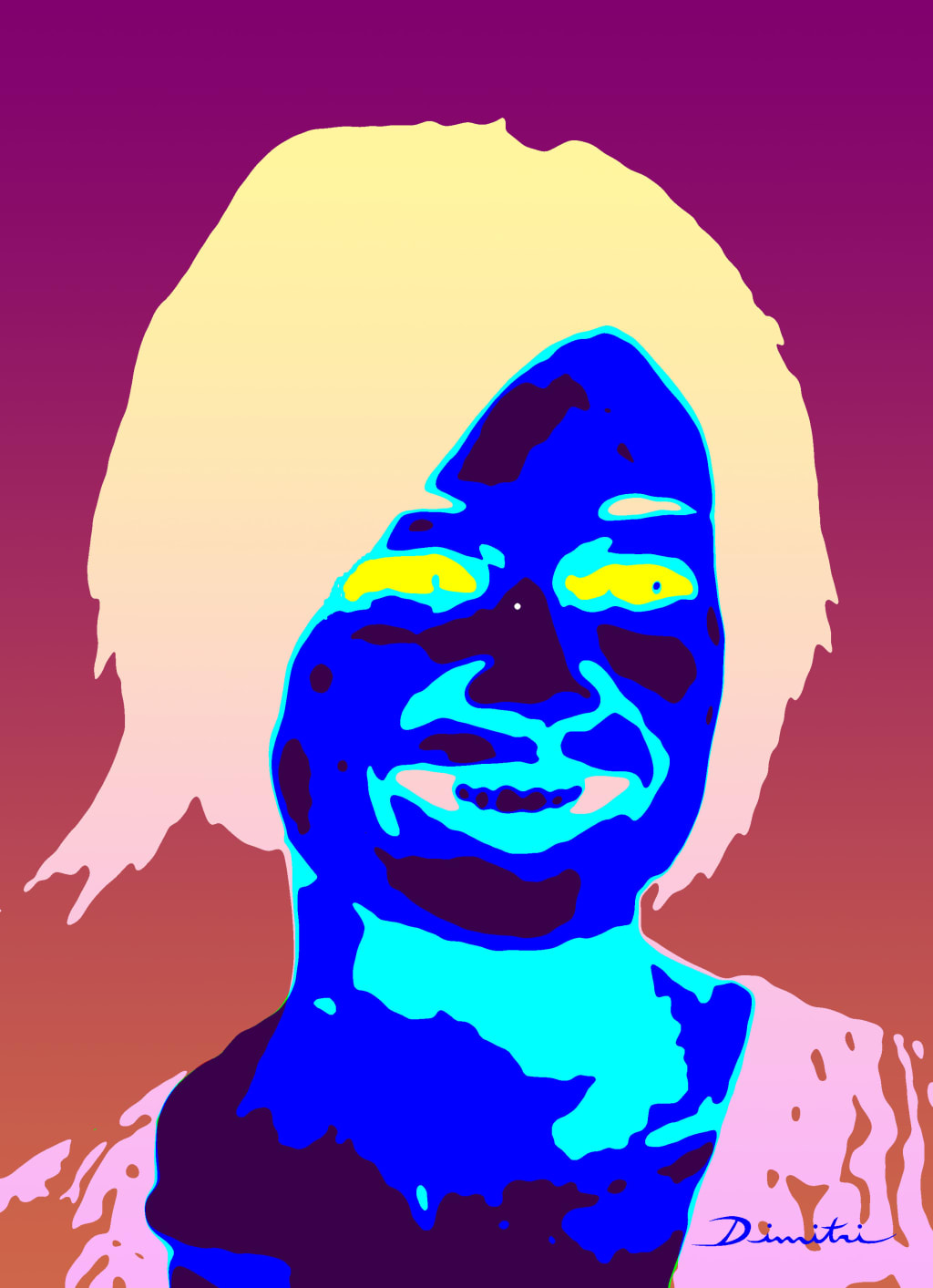
Everyone has experienced an afterimage at some point in their life. Yet, most people don’t realize what they are. An afterimage is a faded illusion of an object continued to be seen for a brief moment, even after you have stopped looking at the actual object. Sometimes the colors are very vivid and bright, while other times, the colors are dull or even inverse or opposite from the original color. Afterimages can all look very different, varying from blotches of light, faded images of the original object, or of course in reversed colors. Afterimages happen all the time, try to recognize it the next time it happens to you.
Although afterimages are generally the same, there is one major difference between all afterimages which is, negative or positive. A negative afterimage is where an afterimage still occurs but the colors in which the object was, is reversed according to the color wheel (e.g, Red=Light Blue; Green=Pink). Otherwise, as a positive afterimage, the colors stay the same. Most commonly, the afterimage is of a bright white light, including headlights or just a white light in the house. While afterimage is the broad idea of a brief image continuing to be seen after looking away, there are different types of afterimages that will categorize the types of brief images that you continue to see.
Why do afterimages happen, is the big question here. The general reason for an afterimage is because there has been a long exposure of a very bright stimulus. According to the dictionary stimulus or stimuli (the plural of stimulus) is, “A thing or event that evokes a specific functional reaction in an organ or tissue.” From that being said, in the context of afterimages, stimulus means an event that causes enough bright light or colors to provoke an afterimage. Negative afterimages occur when the eyes' photoreceptors, or rods and cones, adapt to the overstimulation of colors and brightness and start to lose sensitivity and the signal to the brain will decrease. This causes the colors to reverse and create a negative afterimage.
Beautiful afterimages can appear. While the thought of a beautiful afterimage doesn’t seem very realistic and true, they can happen. Although, it’s nothing like the breathtaking view of a waterfall or the miles beyond miles of land you can see from the top of a mountain, it surely is a sight of wondrous colors and detail. According to Journal of Vision, “For obtaining really beautiful positive after-images, the following additional rules should be observed. Both before and after they are developed, any movement of the eye or any sudden movement of the body must be carefully avoided, because under such circumstances they invariably vanish for a while.” Although there is no scientifically proven explanation on why afterimages slowly disappear, there are a few widely accepted theories for some of the ways that it disappears.
First, any movement of the eye, meaning looking around, can disrupt the adaptation of the retina. The retina is a layer in the back of the eyeball that holds cells, those of which are sensitive to light and can trigger nerve impulses that travel through the optic nerve (in the back of the eyeball) and to the brain to create a visual image. Hermann Von Helmholtz, further known as Helmholtz, was a German scientist and philosopher. He says that more specifically, the movement in the eye can cause illumination or light changes, causing the afterimage to disappear. As theories, there’s one thing that we still don’t truly know. What does blinking do to afterimages? Some people believe that blinking can recover the afterimage for a short time after it has faded. As a contradictory, others think that blinking can disrupt the afterimage and make it disappear quicker. Which one happens to you?
Afterimage all start in the eyes. That’s why knowing about the parts of the eye and what they do is important. The basic parts of the eye that we’ve all have grown to know and love are the eyelid, pupil, sclera, and iris. As common knowledge, the eyelids live up to their name and are the lower and upper layer of skin that cover the eye when closed. The pupil and the iris work together when it comes to lighting. The light enters through the pupil while the iris regulates the amount of light by controlling the size of the pupil. That’s why the pupil changes in size. Now, the sclera is mostly the protective outer layer of the eye, it is made up of collagen and elastic fiber.
Although there are so many more parts of the tiny little eye, only some of them will be shared. The ciliary body is a circular structure behind the iris which is made up of ciliary muscle. It is attached to the lens and modifies vision focus by changing the shape of the lens. The cornea is the outermost layer. It plays an important role in focusing your vision, shared with the lens and ciliary body. The choroid is another part of the eyeball, it is between the sclera and the retina. It is composed of blood vessels and connective tissue. The fovea is a small depression in the retina where visual acuity is the highest and best. High visual acuity is when the retina focus is sharp, and the health and functioning of the retina is good. The zonules are “a series of fibers connecting the ciliary body and lens of the eye,” according to Medical Dictionary. Now, the vitreous humor is transparent and jelly-like tissue that fills the rest of the eyeball behind the lens. Last, the optic nerve sends impulses to the brain from the retina which creates a visual image. Every part of the eye does something, even if it’s only a little.
Afterimages happen all of the time, and only sometimes do you notice them. The eyeball does much more than anyone could think of, even as such a small part of your body. It’s important to understand the parts of the eye when learning about afterimages and how they work. The eye is amazing but it cannot be perfect all of the time. That’s why afterimages are so mysterious, they don’t seem normal, except they are a part of everyone’s daily life. Bright colors and light trigger afterimages, remember to recognize an afterimage the next time it happens to you!
About the Creator
Grace Mitchell
Would love if I got gifts, but I’m not extremely desperate.... just need to save up money for life.
Love all of you guys!






Comments
There are no comments for this story
Be the first to respond and start the conversation.